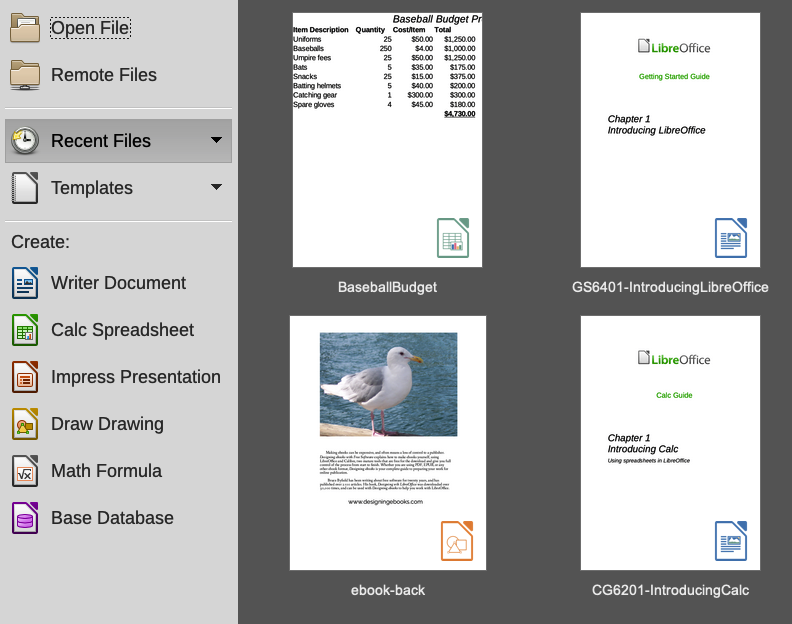
This document is Copyright © 2020 by the LibreOffice Documentation Team. Contributors are listed below. You may distribute it and/or modify it under the terms of either the GNU General Public License (https://www.gnu.org/licenses/gpl.html), version 3 or later, or the Creative Commons Attribution License (https://creativecommons.org/licenses/by/4.0/), version 4.0 or later.
All trademarks within this guide belong to their legitimate owners.
To this edition
Jean Hollis Weber
To previous editions
Jean Hollis Weber
Please direct any comments or suggestions about this document to the Documentation Team’s mailing list: documentation@global.libreoffice.org
Everything you send to a mailing list, including your email address and any other personal information that is written in the message, is publicly archived and cannot be deleted.
Published November 2020. Based on LibreOffice .
Some keystrokes and menu items are different on macOS from those used in Windows and Linux. The table below gives some common substitutions for the instructions in this document. For a detailed list, see the application Help.
Windows or Linux
Tools > Options
menu selection
Access setup options
Control +click or right-click depending on computer setup
Open a context menu
Used with other keys
Open the Styles deck in the Sidebar
LibreOffice is a freely available, fully-featured office productivity suite. Its native file format is Open Document Format (ODF), an open standard format that is being adopted by governments worldwide as a required file format for publishing and accepting documents. LibreOffice can also open and save documents in many other formats, including those used by several versions of Microsoft Office.
LibreOffice includes the following components.
Writer is a feature-rich tool for creating letters, books, reports, newsletters, brochures, and other documents. You can insert graphics and objects from other components into Writer documents. Writer can export files to HTML, XHTML, XML, Adobe Portable Document Format (PDF), EPUB, and several versions of Microsoft Word files. It also connects to your email client.
Calc has all of the advanced analysis, charting, and decision making features expected from a high-end spreadsheet. It includes over 500 functions for financial, statistical, and mathematical operations, among others. The Scenario Manager provides “what if” analysis. Calc generates 2D and 3D charts, which can be integrated into other LibreOffice documents. You can also open and work with Microsoft Excel workbooks and save them in Excel format. Calc can also export spreadsheets in several formats, including for example Comma Separated Value (CSV), Adobe PDF and HTML formats.
Impress provides all the common multimedia presentation tools, such as special effects, animation, and drawing tools. It is integrated with the advanced graphics capabilities of LibreOffice Draw and Math components. Slideshows can be further enhanced using Fontwork special effects text, as well as sound and video clips. Impress can open, edit and save Microsoft PowerPoint presentations and can also save your work in numerous graphics formats.
Draw is a vector drawing tool that can produce everything from simple diagrams or flowcharts to 3D artwork. Its Smart Connectors feature allows you to define your own connection points. You can use Draw to create drawings for use in any of the LibreOffice components, and you can create your own clip art and then add it to the Gallery. Draw can import graphics from many common formats and save them in many formats, including PNG, GIF, JPEG, BMP, TIFF, SVG, HTML and PDF.
Base provides tools for day-to-day database work within a simple interface. It can create and edit forms, reports, queries, tables, views, and relations, so that managing a relational database is much the same as in other popular database applications. Base provides many new features, such as the ability to analyze and edit relationships from a diagram view. Base incorporates two relational database engines, HSQLDB and Firebird. It can also use PostgreSQL, dBASE, Microsoft Access, MySQL, Oracle, or any ODBC compliant or JDBC compliant database. Base also provides support for a subset of ANSI-92 SQL.
Math is the LibreOffice formula or equation editor. You can use it to create complex equations that include symbols or characters not available in standard font sets. While it is most commonly used to create formulas in other documents, such as Writer and Impress files, Math can also work as a standalone tool. You can save formulas in the standard Mathematical Markup Language (MathML) format for inclusion in web pages and other documents not created by LibreOffice.
Here are some of the advantages of LibreOffice over other office suites:
You can read more about LibreOffice and The Document Foundation on their websites at https://www.libreoffice.org/ and https://www.documentfoundation.org/.
LibreOffice 7.0 requires one of the following operating systems:
Some LibreOffice features (wizards and the HSQLDB database engine) require that the Java Runtime Environment (JRE) (or, for macOS, the Java Development Kit (JDK)) is installed on your computer. Although LibreOffice will work without Java support, some features will not be available.
Java is available at no cost. More information and download links to the appropriate edition for your operating system can be found at: https://java.com/en/download/manual.jsp
If you want to use LibreOffice features that require Java, it is important that the correct 32-bit or 64-bit edition matches the installed version of LibreOffice. See the Advanced Options in Chapter 2 of this guide.
For a more detailed listing of hardware and software requirements, see the LibreOffice website,
https://www.libreoffice.org/get-help/system-requirements/.
Versions of LibreOffice for Windows, Linux, and macOS can be downloaded free from https://www.libreoffice.org/download. You can also download the software by using a Peer-to-Peer client, such as BitTorrent, at the same address.
Linux users will also find LibreOffice included in many of the latest Linux distributions; Ubuntu is just one example.
macOS users can also get two versions of LibreOffice from the App Store for a small fee: LibreOffice Vanilla and Collabora Office (an enterprise-ready version).
Windows users can also get LibreOffice Vanilla from the Microsoft Store for a small fee.
Information on installing and setting up LibreOffice on the various supported operating systems is given here: https://www.libreoffice.org/get-help/install-howto/.
Extensions and add-ons are available to enhance LibreOffice. Several extensions are installed with the program and you can get others from the official extensions repository, https://extensions.libreoffice.org/. See Chapter 14, Customizing LibreOffice, for more information on installing extensions and add-ons.
In general, you start LibreOffice the same way you start any other program on your computer.
On Windows and Linux, entries for LibreOffice and each of its components appear in the system menu of your computer. On macOS, only an entry for LibreOffice is added to the Applications menu. You can make a desktop icon for LibreOffice or a component in the same way you can make a desktop icon for any other program; see your operating system’s help for how to do this.
Clicking on the LibreOffice menu entry, desktop icon, or tile opens the LibreOffice Start Center (Figure 1) from where you can select the individual components of LibreOffice. You can also choose to open an existing file or use a template. The thumbnails in the Start Center include an icon showing the type of file (text, spreadsheet, drawing, presentation).
Figure 1: LibreOffice Start Center

You can start LibreOffice by double-clicking the filename of an ODF document on the desktop, or in a file manager such as Windows Explorer or macOS Finder. The appropriate component of LibreOffice will start and the document will be loaded.
You can also open files stored in remote servers running Content Management Interoperability Services (CMIS). CMIS, like OpenDocument Format, is an OASIS standard. When using CMIS servers, the service will ask you for the necessary credentials for file access.
If you do not have Microsoft Office installed on your computer, or if Microsoft Office is installed but you have associated Microsoft Office file types with LibreOffice, then when you double-click on the following files, they open in LibreOffice:
If you did not associate the file types and Microsoft Office is installed on your computer, then when you double-click on a Microsoft Office file, it opens using the appropriate Microsoft Office component.
For more information on opening files, see “Opening existing documents”.
The main window is similar for each component of LibreOffice, although some details vary. See the relevant chapters in this guide about Writer, Calc, Draw, Impress, Base, and Math for descriptions of those details.
Common features include the Menu bar, standard toolbar, and formatting toolbar (Writer and Calc only) at the top of the window and the status bar at the bottom.
The Menu bar is located across the top of the LibreOffice window, just below the title bar. When you select one of the menus listed below, a sub-menu drops down to show commands. Below is the case for Writer:
LibreOffice has two types of toolbars: docked (fixed in place) and floating. Docked toolbars can be moved to different locations or made to float, and floating toolbars can be docked.
In a default LibreOffice installation, the top docked toolbar, just under the Menu bar, is called the Standard toolbar. It is consistent across the LibreOffice applications.
The second toolbar at the top for Writer and Calc, in a default LibreOffice installation, is the Formatting bar. It is context-sensitive; that is, it shows the tools relevant to the current position of the cursor or the object selected. For example, when the cursor is on a graphic, the Formatting bar provides tools for formatting graphics; when the cursor is in text, the tools are for formatting text.
In some cases it is convenient to reduce the number of toolbars displayed and get more space for the document. LibreOffice provides a single-toolbar alternative to the default double-toolbar setup. It contains the most-used commands. To activate it, enable View > User Interface > S ingle Toolbar.
Other variations include Tabbed and Groupedbar Compact, both accessed from View > User Interface . These provide a collection of tools at the top of the workspace, grouped in various ways that may be familiar to users of Microsoft Office (the “ribbon”).
To display or hide toolbars in a standard setup, go to View > Toolbars on the Menu bar, then click on the name of a toolbar from the submenu. An active toolbar shows a checkmark beside its name. Toolbars created from tool palettes are not listed in the View menu.
To close a toolbar, go to View > Toolbars on the Menu bar and deselect the toolbar, or right-click in an empty space between the icons on a toolbar and select Close Toolbar in the context menu.
Toolbar icons with a small triangle to the right will display sub-menus, tool palettes, and alternative methods of selecting items, depending on the icon.
Tool palettes can be made into a floating toolbar. Figure 2 shows an example of a tool palette from the Drawing toolbar made into a floating toolbar. See “Moving toolbars” and “Floating toolbars” below for more information on moving and floating these toolbars created from tool palettes.
Figure 2: Example of tearing off a tool palette
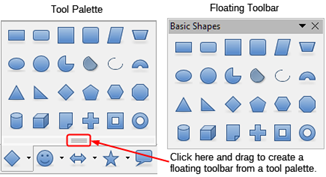
Docked toolbars can be undocked and moved to a new docked position or left as a floating toolbar.
1) Move the mouse cursor over the toolbar handle, which is the small vertical bar to the left of a docked toolbar and highlighted in Figure 3.
2) Hold down the left mouse button and drag the toolbar to the new location. The toolbar can be docked in a new position at the top, sides or bottom of the main window, or left as a floating toolbar.
3) Release the mouse button.
To move a floating toolbar, click on its title bar and drag it to a new floating location or dock the toolbar at the top or bottom of the main window.
Figure 3: Toolbar handles
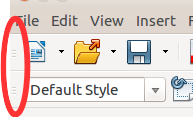
LibreOffice includes several additional toolbars, whose default settings have them appear as floating toolbars in response to the current position of the cursor or selection. You can dock these toolbars to the top or bottom of the main window, or reposition them on your computer display (see “Moving toolbars” above).
Some of these additional toolbars are context sensitive and will automatically appear depending on the position of the cursor. For example, when the cursor is in a table, a Table toolbar appears, and when the cursor is in a numbered or bullet list, the Bullets and Numbering toolbar appears.
You can customize toolbars in several ways, including choosing which icons are visible and locking the position of a docked toolbar. You can also add icons and create new toolbars, as described in Chapter 14, Customizing LibreOffice. To access the customization options for a toolbar, right-click in an empty space between the icons on a toolbar to open a context menu as follows:
Figure 4: Selection of visible toolbar icons
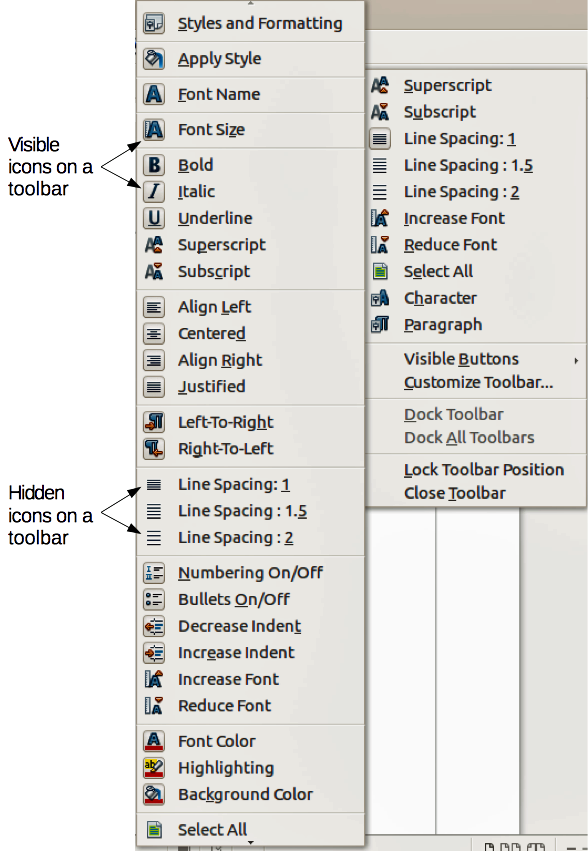
Context menus provide quick access to many menu functions. They are opened by right-clicking on a paragraph, graphic, or other object. When a context menu opens, the functions or options available will depend on the object that has been selected. A context menu can be the easiest way to reach a function, especially if you are not sure where the function is located in the menus or toolbars. Context menus may display an applicable keyboard shortcut if one has been set; you can toggle this visibility off or on in Tools > Options > LibreOffice > View > Visibility .
Figure 5: Keyboard shortcuts in context menus
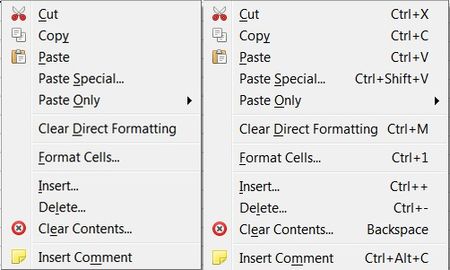
The status bar is located at the bottom of the workspace. It provides information about the document and convenient ways to change some features quickly. It is similar in Writer, Calc, Impress, and Draw, but each LibreOffice component includes some component-specific items. An example of the Writer status bar is shown in Figure 6.
Figure 6: Example status bar from Writer


Page, sheet, or slide number and page count
Shows the current page, sheet, or slide number and the total number of pages, sheets, or slides in the document. Click on this field to open the Go to Page dialog. Other uses of this field depend on the LibreOffice component.
Word & character count
Shows the total number of words and characters in the document or in the selection.
Page style or slide design
Shows the current page style or slide design. To edit the current page style or slide design, double-click on this field. To choose a different page style or slide design, right-click on this field and select from the list that pops up.
Shows the current language of the text at the current cursor position.
Shows the type of insert mode the program is in. This field is blank if the program is in Insert mode. Each time the Ins key is pressed, or this field is clicked, the mode toggles between Insert and Overwrite.
Click to choose different selection modes. The icon does not change, but when you hover the mouse pointer over this field, a tooltip indicates which mode is active.
The icon shown here is different when changes to the document have not been saved.
If the document has been digitally signed, an icon shows here. You can click the icon to sign the document, or to view the existing certificate.
Displays information relevant to the position of the cursor or the selected element of the document.
Select between Single-page view, Multiple-page view, and Book view to change how your document is displayed.
Drag the Zoom slider, or click on the + and – signs to change the view magnification of your document.
Indicates the magnification level of the document. Right-click on the percentage figure to open a list of magnification values from which to choose. Clicking on this percentage figure opens the Zoom & View Layout dialog.
To activate the Sidebar, select View > Sidebar on the Menu bar. The Sidebar (Figure 7) is located on the right side of the edit views of Writer, Calc, Impress, and Draw. It contains one or more decks, based on the current document context. Decks are organized into panels. A tab bar on the right side of the sidebar allows you to switch between different decks.
All four components contain the Properties, Styles, Gallery, and Navigator decks. Some components have additional decks, such as Page for Writer; Master Slides, Animation, and Slide Transition for Impress; Shapes for Draw; and Functions for Calc.
A panel is like a combination of a toolbar and a dialog. For example, you can freely mix working in the main edit window to enter text and use the Properties panel in the sidebar to change text attributes.
Toolbars and Sidebar panels share many functions. For example, the buttons for making text bold or italic exist in both the Formatting toolbar and the Properties panel.
For more detail, see the Sidebar explanation in the relevant LibreOffice component’s user guide.
To hide the Sidebar, click on the gray Hide button on the left. Click on the same button to show the Sidebar again.
To undock the Sidebar and make it floating, and to dock a floating Sidebar, use the Sidebar settings drop-down list at the top of the tab bar (see Figure 8). From the same list you can choose which items to show in the Sidebar.
Figure 7: Properties panel of Sidebar in Writer
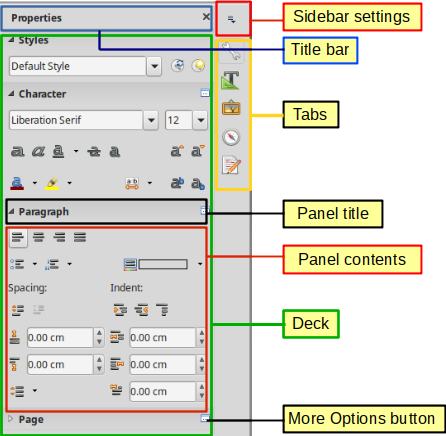
Figure 8: Floating (undocking) or docking the Sidebar
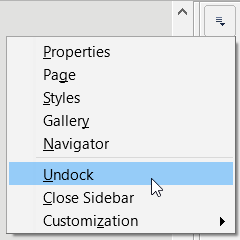
You can start a new, blank document in LibreOffice in several ways.
When LibreOffice is running but no document is open, the Start Center (Figure 1) is shown. Click one of the icons to open a new document of that type, or click the Templates icon to start a new document using a template.
You can also start a new document in one of the following ways:
If all documents are closed without exiting from LibreOffice, then the Start Center will be displayed.
You can also open an existing document in one of the following ways:
When using the Open dialog, navigate to the folder you want, select the file you want, and then click Open . If a document is already open in LibreOffice, the second document opens in a new window.
In the Open dialog, you can reduce the list of files by selecting the type of file you are looking for. For example, if you choose Text documents as the file type, you will only see documents Writer can open (including .odt, .doc, .txt); if you choose Spreadsheets, you will see .ods, .xls, and other files that Calc opens.
You can also open an existing document that is in a format that LibreOffice recognizes by double-clicking on the file icon on the desktop or in a file manager such as Windows Explorer. LibreOffice has to be associated with file types that are not ODF files for the appropriate LibreOffice component to open.
When opening files stored in a remote server, you may be asked to enter your user name and password to log in the server.
You can save documents as follows:
To save a document if you are keeping the document’s current filename and location, do one of the following:
Using the Save command will immediately overwrite the last saved version of the file.
Figure 9: Example of LibreOffice Save As dialog

If you want to create a new document file, change the filename and/or file format, or save the file in a different location on your computer:
When the Save As dialog (Figure 9) or Save dialog opens, enter the file name, change the file type (if applicable), navigate to a new location (if applicable), and click Save .
To restrict who can open and read a document, or open and edit the document, use password protection.
1) Using the Save As command above, select the Save with password option in the Save As dialog or Save dialog.
2) Click Save and the Set Password dialog opens (Figure 10).
3) In the File Encryption Password section, enter a password to open the document and then enter the same password as confirmation.
4) To restrict who can edit the document, click Options .
5) In the File Sharing Password section, select Open file read-only , enter a password to allow editing, and then enter the same password as confirmation.
6) Click OK and the dialog closes. If the passwords match, the document is saved password-protected. If the passwords do not match, you receive an error message.
Figure 10: Set Password dialog
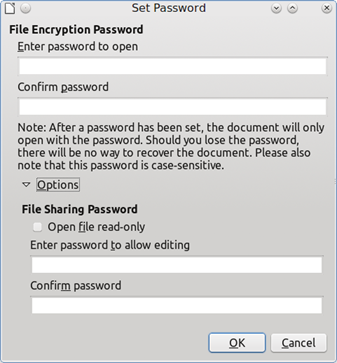
LibreOffice uses a very strong encryption mechanism that makes it almost impossible to recover the contents of a document if you lose or forget the password.
When a document is password-protected, you can change the password while the document is open. Go to File > Properties > General on the Menu bar and click the Change Password button. This opens the Set Password dialog where you can enter a new password.
LibreOffice can save files automatically as part of the AutoRecovery feature. Automatic saving, like manual saving, overwrites the last saved state of the file.
To set up automatic file saving:
1) Go to Tools > Options > Load/Save > General on the Menu bar.
2) Select Save AutoRecovery information every and set the time interval.
LibreOffice can open and save files stored on remote servers. Keeping files on remote servers allows you to work with the documents using different computers. For example, you can work on a document in the office during the day and edit it at home for last-minute changes. Storing files on a remote server also backs up documents from computer loss or hard disk failure. Some servers are also able to check-in and check-out files, thus controlling their usage and access.
LibreOffice supports many document servers that use well known network protocols such as FTP, WebDav, Windows share, and SSH. It also supports popular services like Google Drive and Microsoft OneNote, as well as commercial and open source servers that implement the OASIS CMIS standard.
To enable a remote server connection, use one of these methods:
On the Remote Files dialog (Figure 12), click Manage Services / Add Service button in the upper right to open the File Services dialog (Figure 11). Depending on the type of file service you choose in the Type listbox, different parameters are necessary to fully qualify the connection to the remote server.
Figure 11: Remote server configuration
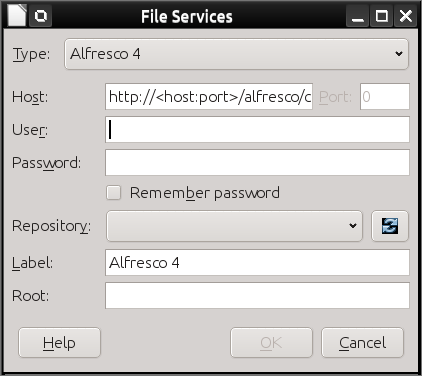
Once the connection is defined, click OK to connect. The dialog will dim until the connection is established with the server. A dialog asking for the user name and the password may pop up to let you log in the server. Proceed entering your credentials.
The Remote Files dialog (Figure 12) which then appears has many parts. The upper list box contains the list of remote servers you have previously defined. The line below the list box shows the path to access the folder. On the left is the folder structure of the user space in the server. The main pane displays the files in the remote folder. Click the Open or Save button to proceed.
Figure 12: Remote Files dialog when connected to a server
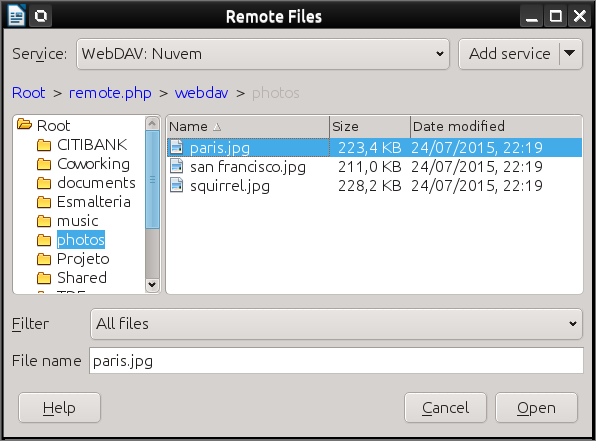
The LibreOffice Navigator lists objects contained within a document, collected into categories. For example, in Writer it shows Headings, Tables, Frames, Comments, Images, Bookmarks, and other items, as shown in Figure Figure 13. In Calc it shows Sheets, Range names, Database ranges, Images, Drawing objects, and other items. In Impress and Draw it shows Slides, Pages, and other items.
To open the Navigator, press the F5 key, or go to View > Navigator on the Menu bar, or click the Navigator icon on the Sidebar.
Click the marker (+ or triangle) by any of the categories to display the list of objects in that category.
The Navigator provides several convenient ways to move around a document and find items in it:
Figure 13: Navigator in Writer

To undo the most recent unsaved change in a document, use the keyboard shortcut Ctrl+Z , or click the Undo icon on the Standard toolbar, or go to Edit > Undo on the Menu bar. Click the small triangle to the right of the Undo icon to get a list of all the changes that can be undone. You can select multiple changes and undo them at the same time.
After changes have been undone, you can redo changes. To redo a change use the keyboard shortcut Ctrl+Y , or click the Redo icon, or go to Edit > Redo on the Menu bar. As with Undo, click on the triangle to the right of the Redo icon to get a list of the changes that can be reapplied.
To repeat the last command applied to your document, use the shortcut Ctrl+Shift+Y . This can save several repetitive menu navigation clicks or keyboard shortcuts, especially when the command is taken from a secondary menu.
Reloading is useful in two situations.
To reload a document, go to File > Reload on the Menu bar. If you have made changes to a file since the last save, a confirmation dialog will warn you that reloading will discard your last changes. Choose whether to save or discard the changes.
On reloading the document, the File dialog does not open, because the file is already selected.
To open the Properties dialog for a document, go to File > Properties on the Menu bar. The Properties dialog provides information about the document and allows you to set some of its properties. The dialog and its tabs are described below.
Contains basic information about the current file: file name and type; storage location; file size; date, time, and author of file creation and last modification; template used to create the file; date, time, and author of digital signature; date, time, and user name when the file was last printed; total editing time; and revision number.
Contains optional editable descriptive information about the document, which may be exported as metadata to other file formats.
Use this page to assign custom information fields to the document. In a new document, this page may be blank. If the new document is based on a template, this page may contain fields. You can change the name, type, and contents of each row. The information in the fields will be exported as metadata to other file formats.
Click Add Property to add a new custom property. Click Reset to delete all custom properties.
Used for documents stored on remote servers; not shown otherwise. See the Help for more information.
Enables two password-protected security options.
Protect or Unprotect button protects the change recording state with a password. If change recording is protected for the current document, the button is named Unprotect . Click Unprotect and type the correct password to disable the protection.
When Embed fonts in the document is selected, any fonts used in the document will be embedded into the document when it is saved. This may be useful if you are creating a PDF and want to control how it will look on other computer systems.
Only embed fonts that are used in documents – If fonts have been defined for the document (for example, in the template), but have not been used, select this option to not embed them.
Font scripts to embed – You can choose which types of fonts are embedded: Latin, Asian, Complex.
Displays statistics for the current file, such as the number of pages, words, and characters.
If only one document is open and you want to close that document, go to File > Close on the Menu bar or click on the X on the right or left end of the Menu bar. On Windows and Linux, the document closes and the LibreOffice Start Center opens. On macOS, the document closes and only the Menu bar remains at the top of the screen.
If more than one document is open and you want to close one of them, go to File > Close on the Menu bar or click on the X on the right or left end of the title bar of that document’s window.
If the document has not been saved since the last change, a message box is displayed. Choose whether to save or discard your changes.
Not saving your document could result in the loss of recently made changes, or worse still, the entire file.
To close LibreOffice completely, go to File > Exit LibreOffice on the Menu bar in Windows and Linux. In macOS, go to LibreOffice > Quit LibreOffice on the Menu bar.
In Windows and Linux, when you close the last document using the X on the title bar of the window, then LibreOffice will close completely. In macOS, you need to use LibreOffice > Quit LibreOffice.
You can also use a keyboard shortcut as follows:
If any documents have not been saved since the last change, a message box is displayed. Choose whether to save or discard your changes.
You can use Safe Mode to help restore an instance of LibreOffice that has become corrupted and stopped working or fails to launch.
To access Safe Mode, do one of the following:
Figure 14: LibreOffice Safe Mode
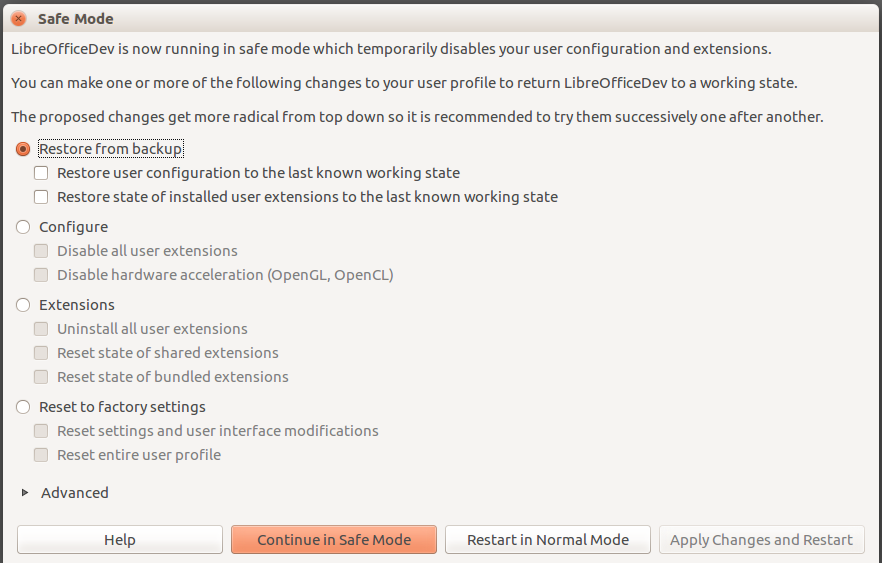
The following Safe Mode options get more extreme from the top down, so it is recommended that you try them successively.
If you are unable to solve your problem using Safe Mode, the Advanced tab provides instructions on receiving further aid.
In the Advanced tab you can also create a .zip file of your corrupted user profile which can then be uploaded to the bug tracking system where it can be further investigated by the developers.
However, be aware that your uploaded user profile may contain sensitive information such as installed extensions, personal dictionaries, and settings.